Detailed examples of Oracle data table import and export
This article brings you relevant knowledge about Oracle, which mainly organizes the related issues of importing and exporting data tables. If a large amount of data needs to be migrated, select "Export Table" and "Import Table" The Oracle method does not require writing a table structure. Let’s take a look at it. I hope it will be helpful to everyone.

Recommended tutorial: "Oracle Video Tutorial"
0. Background: I suddenly received a notice to work from home. All work data is on the intranet and needs to be copied out and taken away. The largest single table is about 3.7G. Based on usual experience, I exported the tables in the Oracle database to xlsx (to facilitate communication with colleagues). I found that the efficiency was too low, and due to the large amount of data, errors were often reported and could not be exported. Later, I tried to export it to a csv file, and it was prompted that the export was completed. However, when I found a new computer to import, I found that the data was seriously missing and could not be used.
1. The original stupid method
Right-click the table to be exported in the object window, click Query Data, and click the csv file or excel file. This method is usually used. The query results are very intuitive and suitable for small amounts of data.

1.Oracle data table export
Export table tool
There are two ways to open it in PL/SQL, method one is Right-click the table that needs to be exported in the object window, click Export Data, and the export table window will pop up. The second method is to click the tool at the top of the PL/SQL page, click Export Table, and the export table window will pop up. The export table tool can export multiple tables in batches
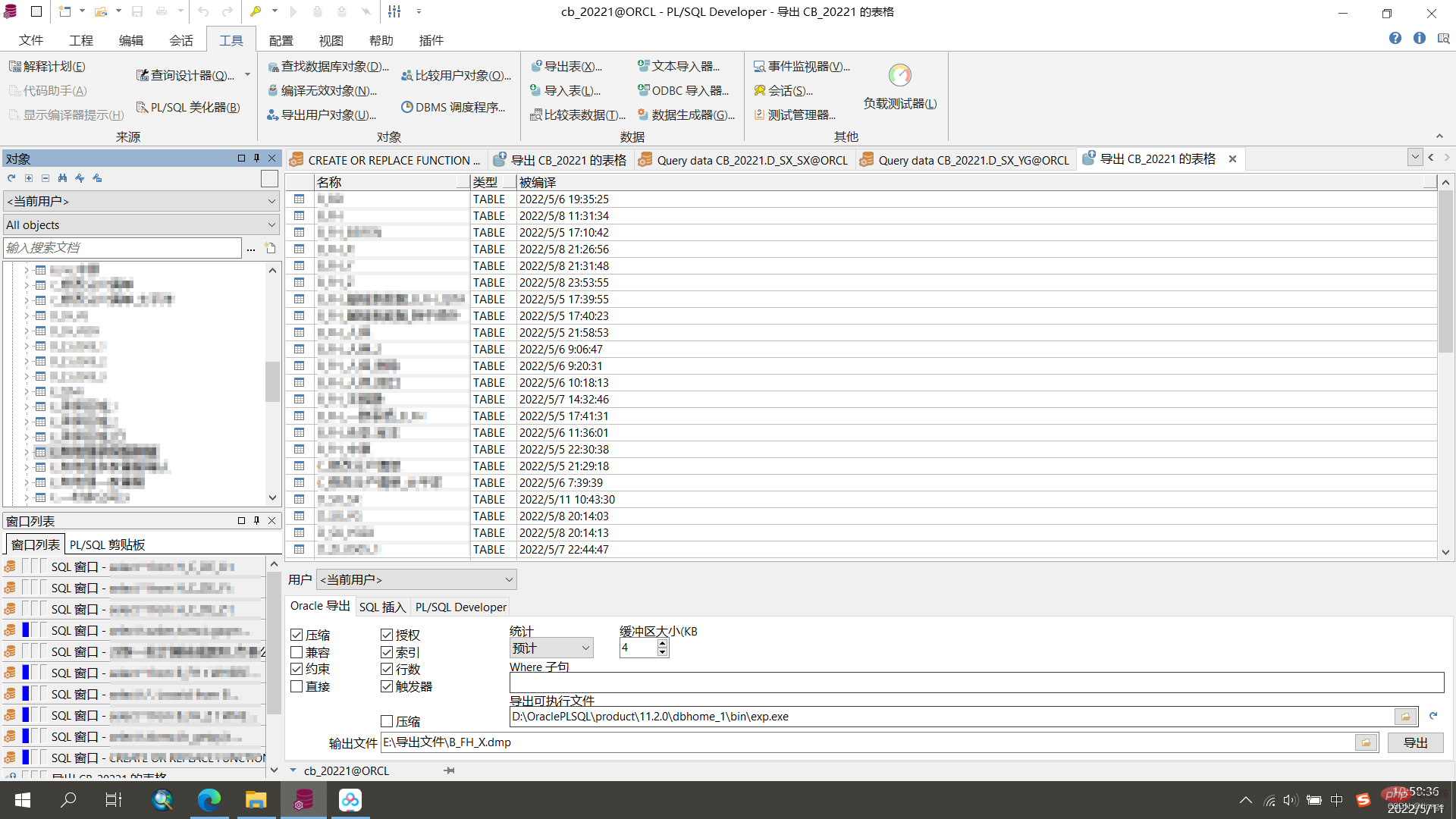
In the export table window, there are three specific export methods, and all three methods can export the table structure and data
(1) Oracle Export
The export result of "Oracle Export" is a binary file in dmp format, which cannot be previewed, but it is fast and can be cross-platform. We plan to use this method in the future. The first dmp file is about 3.61G and takes 3 minutes to export.

(2) SQL Insert
The export result of "SQL Insert" is a file in sql format, which can be previewed in text format, but the speed is not " Oracle export" is fast. For a 3.61G file in dmp format, the export time is 14 minutes and the size is 9.34G.

(3) PL/SQL Developer
The export result of "PL/SQL Developer" is a file in pde format, which is PL/SQL free File format, cannot be previewed in text format, speed
For a 3.61G file in dmp format, the export time is 10 minutes and the size is 0.4G. The amount of data is too small, so I don’t believe that all of it will be copied out, but the number of log prompts is consistent with the data table

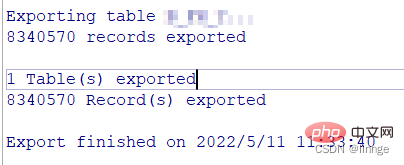
2.Oracle data Table Import
ODBC Importer
ODBC should mean Open Database Connectivity (Open Data Interconnection). I often use the ODBC importer to import EXCEL documents and ACCESS database tables. Importing tables using the ODBC importer requires defining the table structure in advance.
(1) Create a new table
File-New-Create a table and set the table name and columns. Remarks can be added appropriately to facilitate subsequent use. There must be a type when setting the column. Try to set it as large as possible to prevent errors during subsequent imports. You can click the View SQL button to display the SQL statement for creating the table, so that you can directly execute the code to create the table next time. . 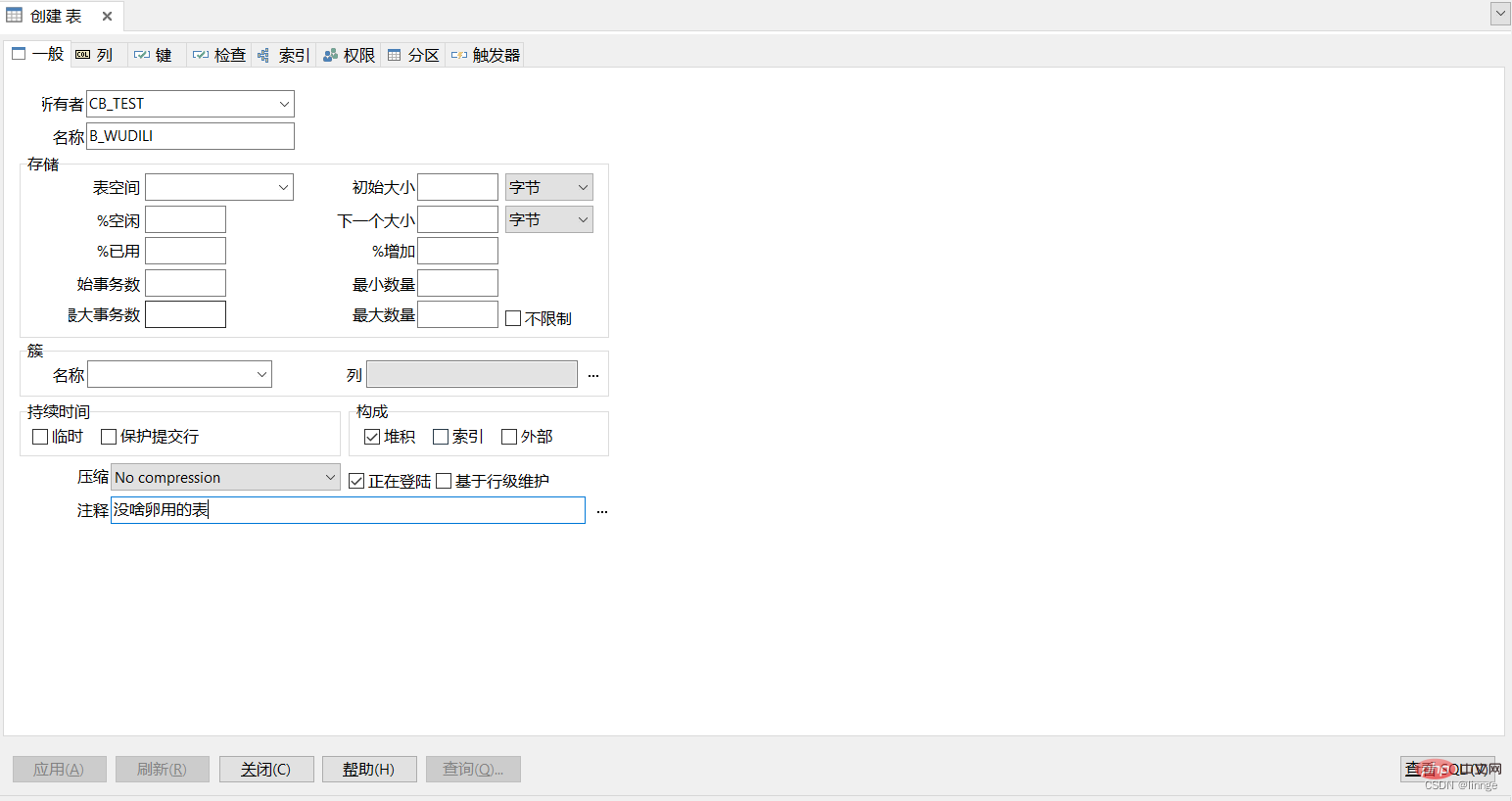
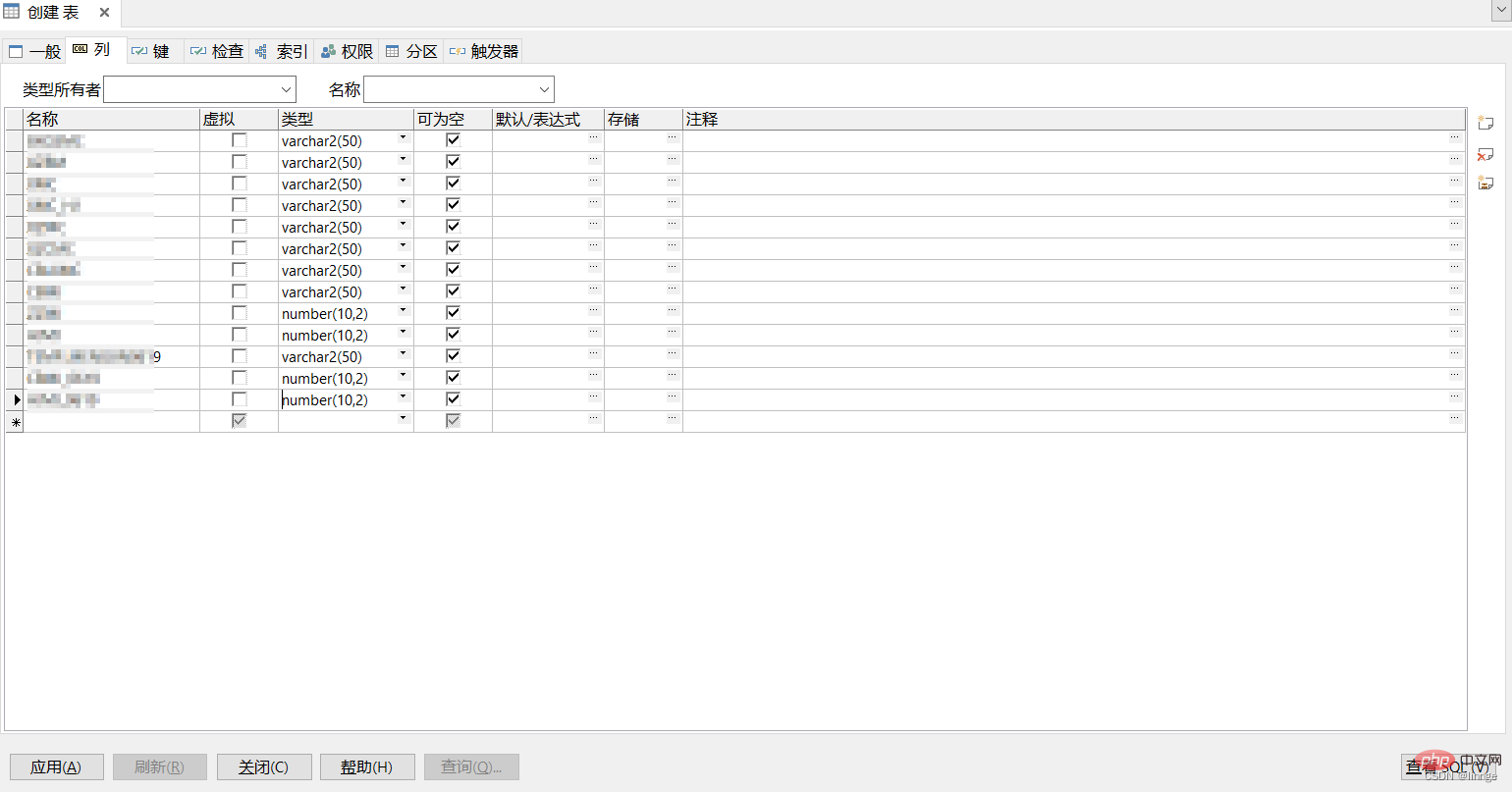
(2) Open the ODBC Importer
Click "Tools" at the top of the PL/SQL page, click "ODBC Importer", and a pop-up will appear ODBC Importer Window
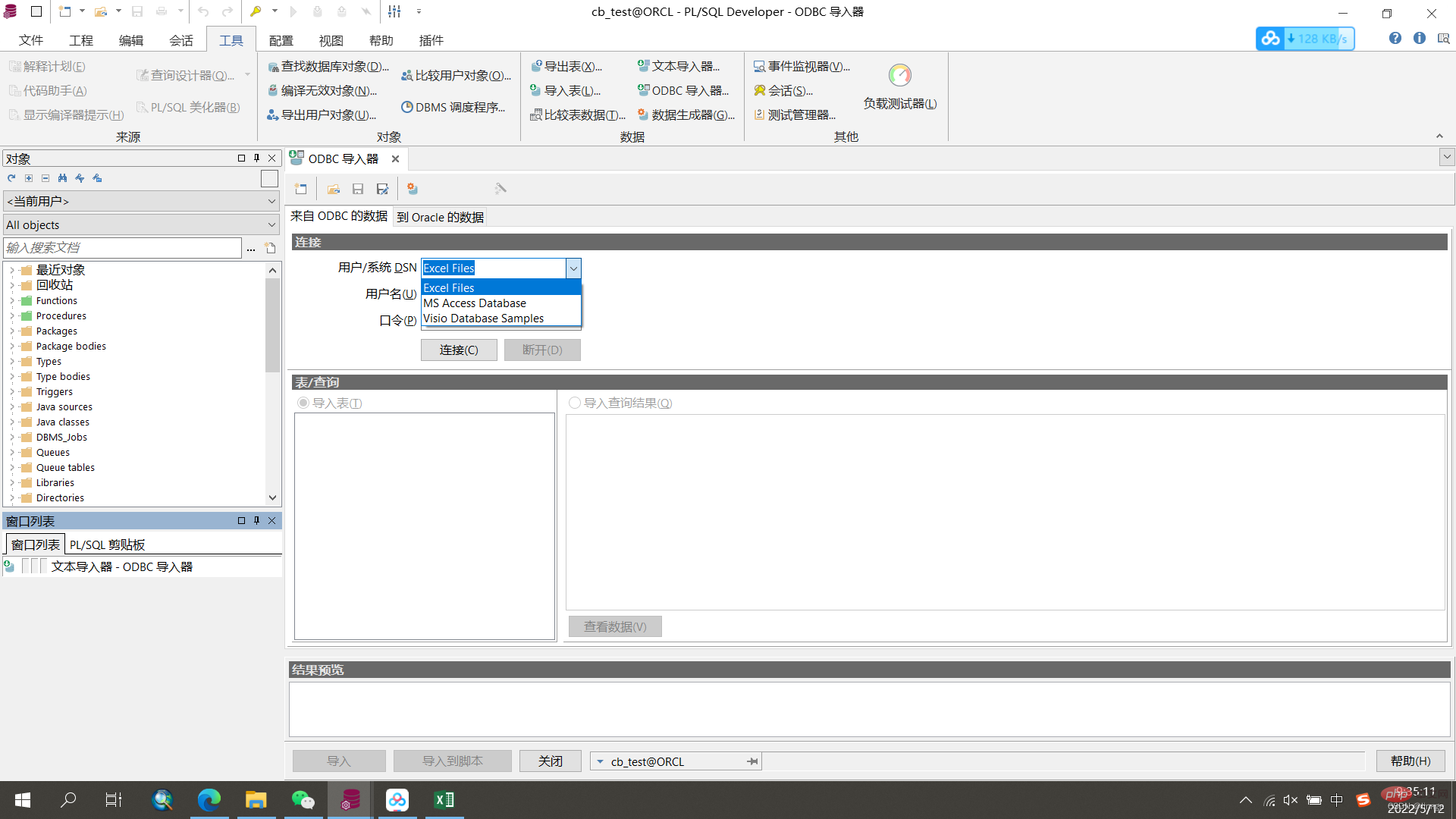
# (3) Select the table to be imported
User/System DSN Select "Excel Files", click Connect, and select the table to be imported surface. Select the specific sheet to be imported and preview
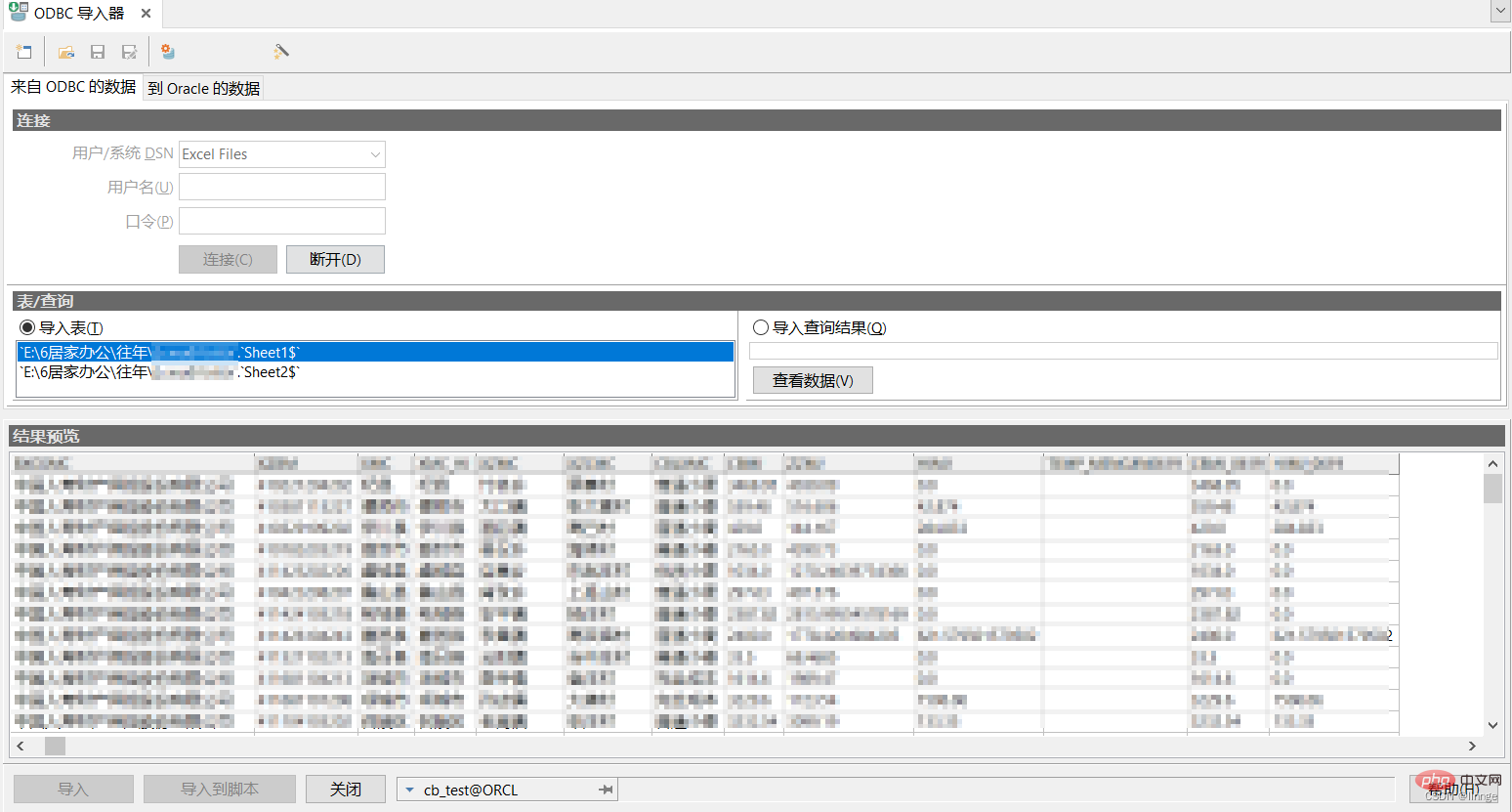
(4) Determine the corresponding location of Oracle
Select the owner, table, and check the field matching. For fields that cannot be automatically matched, manually select the field in the right window Select the corresponding field and field type, and click the "Import" button to import the data.
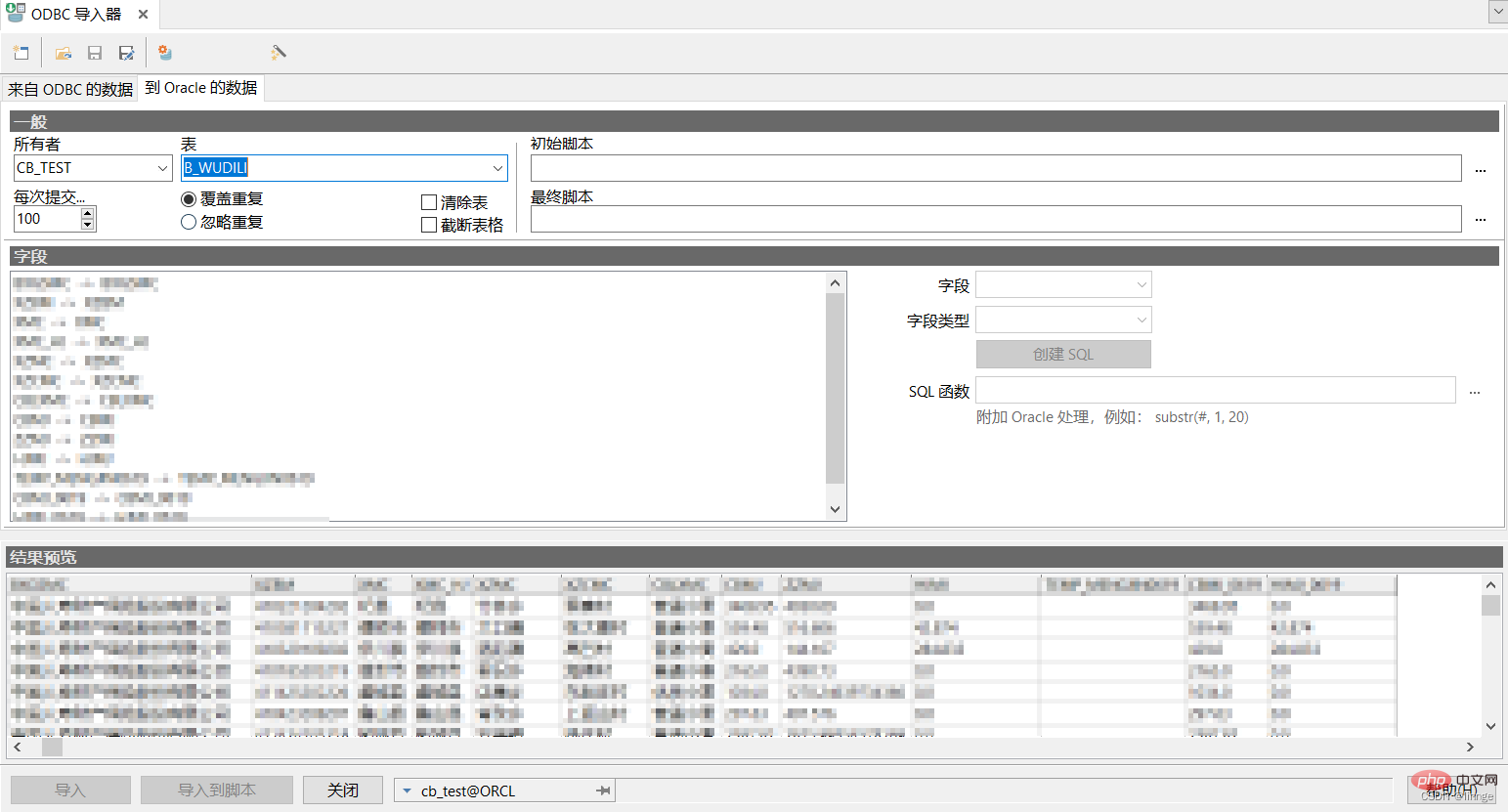
Text Importer
As the name suggests, the text importer imports files in text format. I usually use the text importer to import files in csv format
(1) Create a new table, the specific method is the same as the ODBC importer
(2) Open the text importer
Click "Tools" at the top of the PL/SQL page, click "Text" Importer", the text importer window pops up
(3) Select the table to be imported
Click the Select File button, select the text file to be imported and preview it
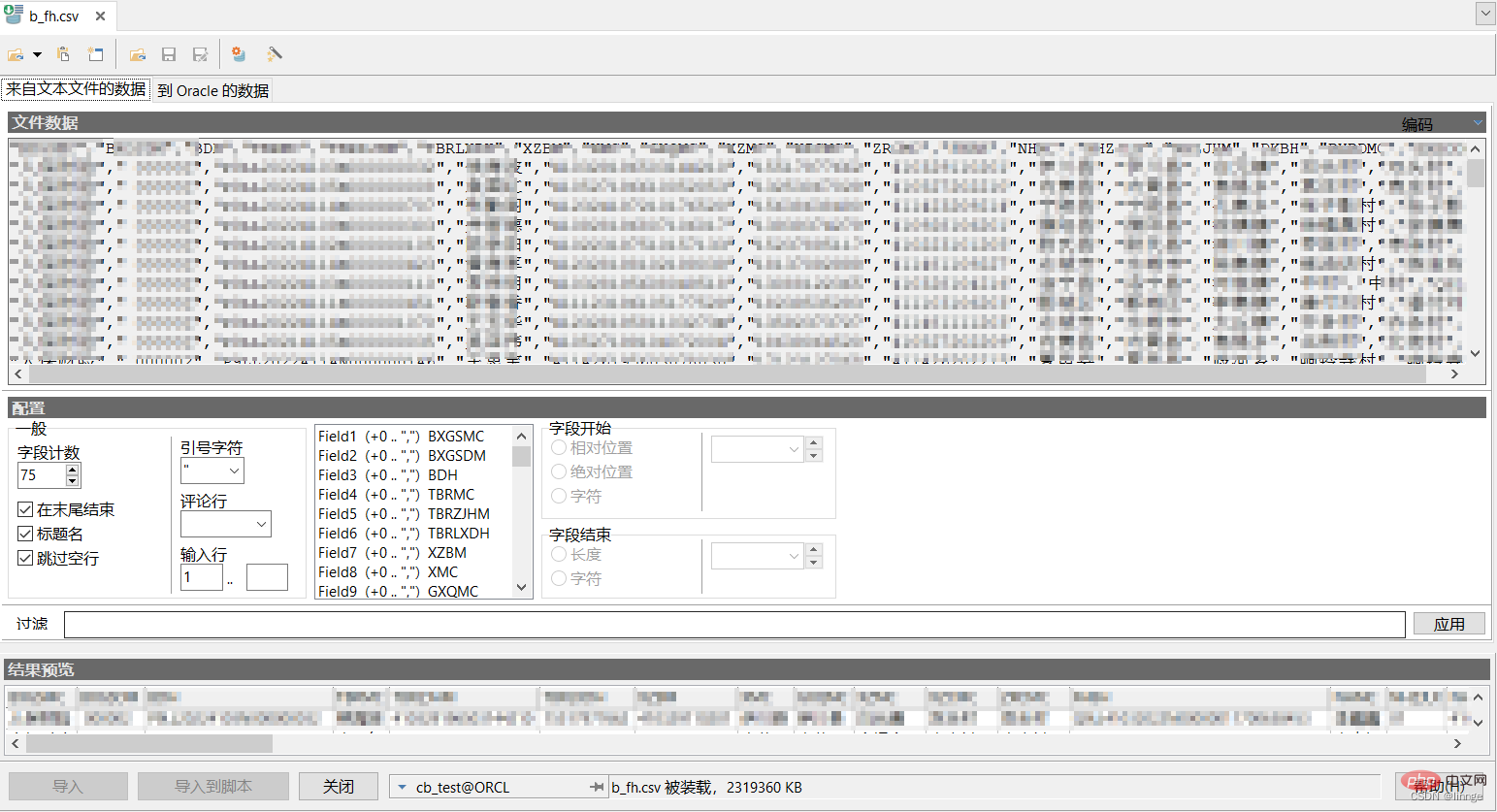
(4) Determine the corresponding location of Oracle
Select the owner, table, and check the field matching. For fields that cannot be automatically matched, manually select the corresponding field in the right window Fields and field types, click the "Import" button to import data.

Import table tool
Click the tool at the top of the PL/SQL page, click Import table, and the import table window will pop up
(1) Oracle import
Select the dmp file to be imported, click the "Import" button, and there will be an import completion prompt at the bottom. After the import is completed, you can view the detailed import results on the rightmost log page
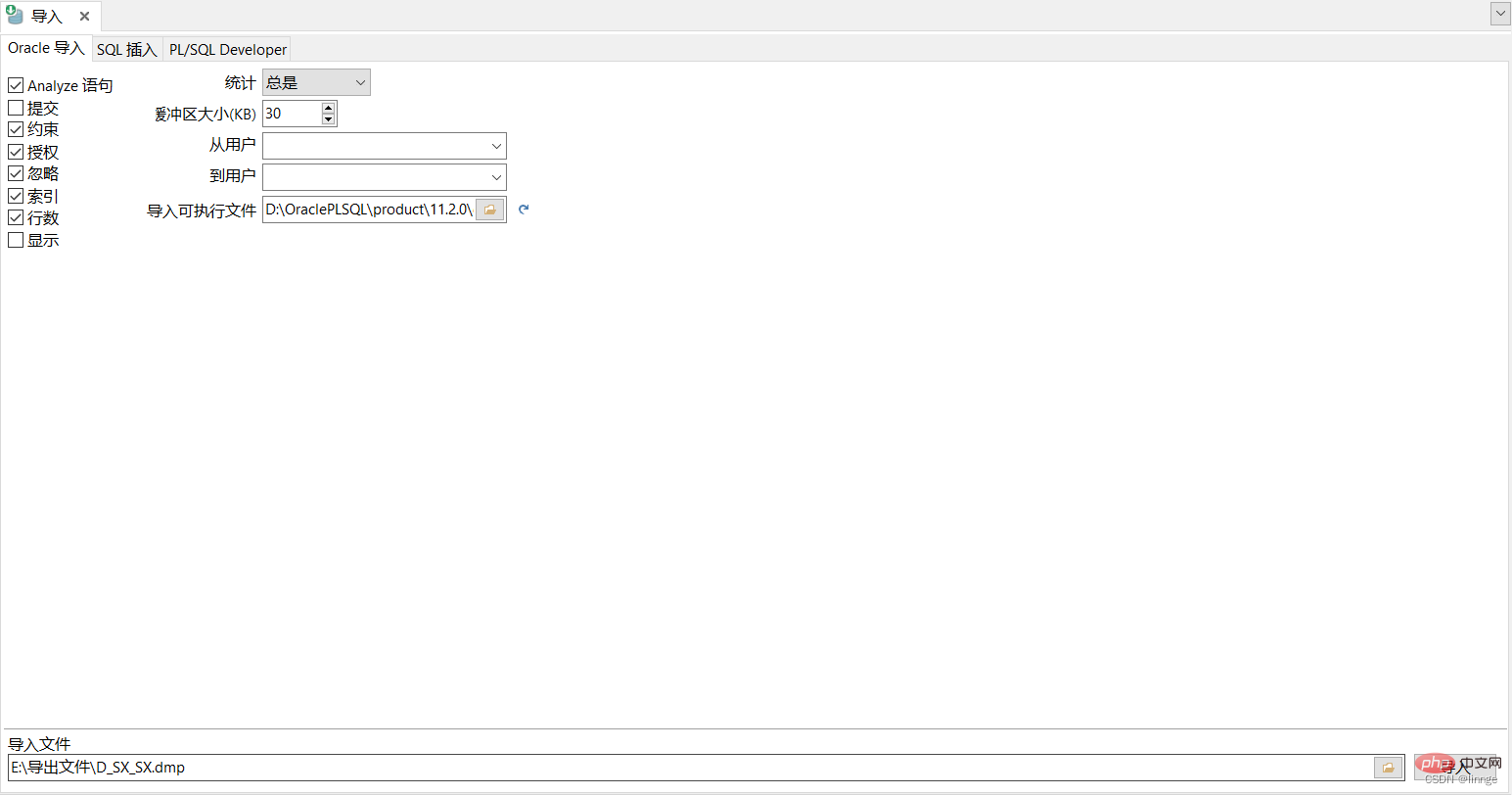
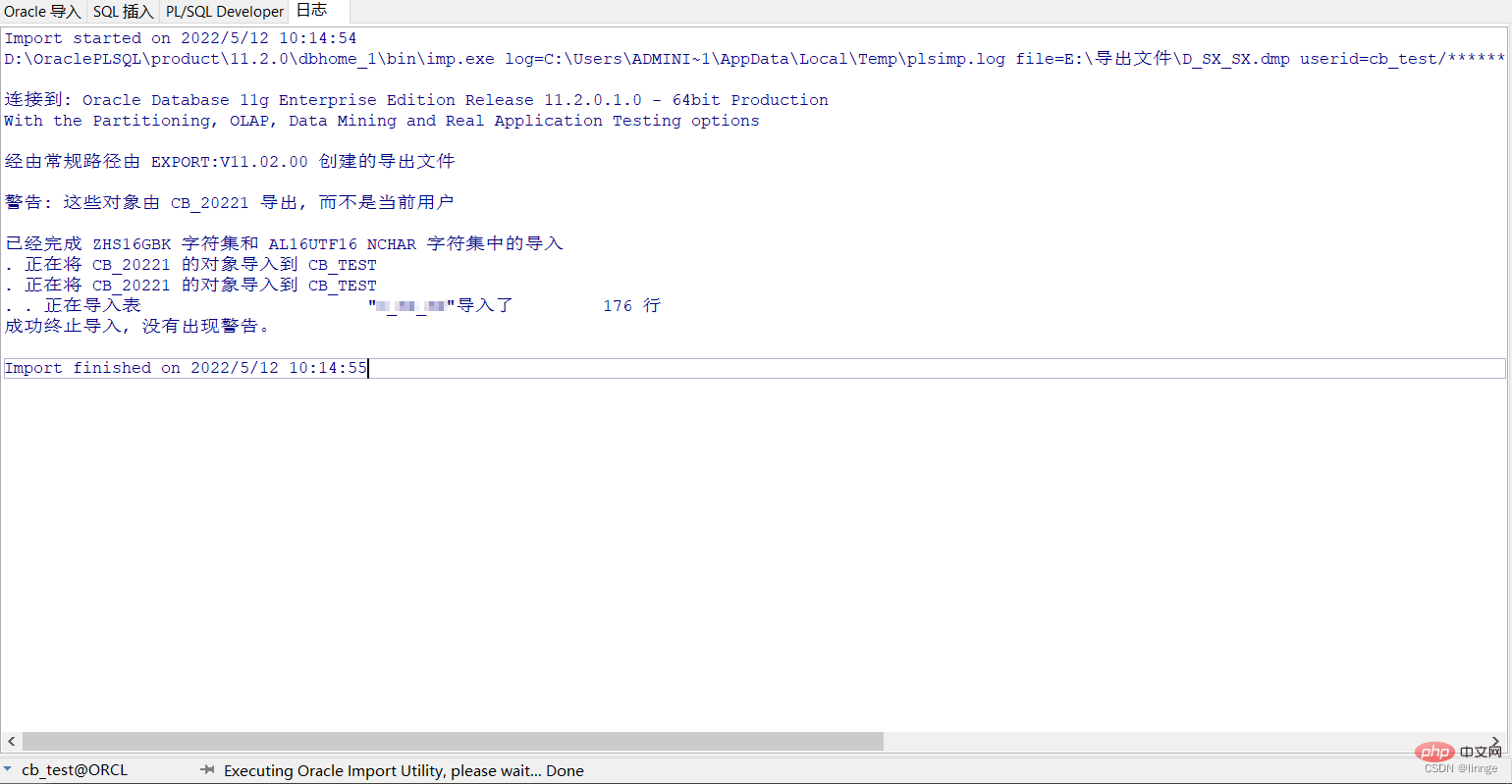
(2) SQL insertion
Select the sql file to be imported and click the "Import" button. The sqlplus.exe execution program window will pop up, showing the real-time progress of the import. After the import is completed, you can view the detailed import results on the rightmost log page

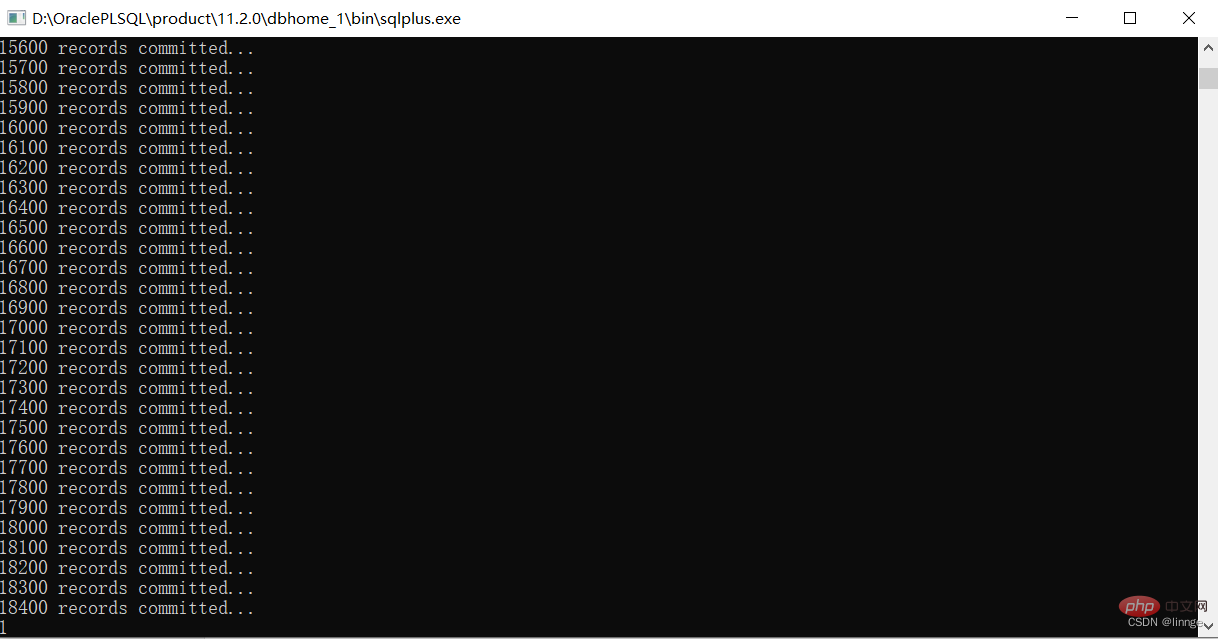
(3) PL/SQL Developer
Select the pde file that needs to be imported, click the "Import" button, and there will be an import completion prompt at the bottom. After the import is completed, you can view the detailed import results on the log page on the far right. The speed is really slow, slower than SQL insertion
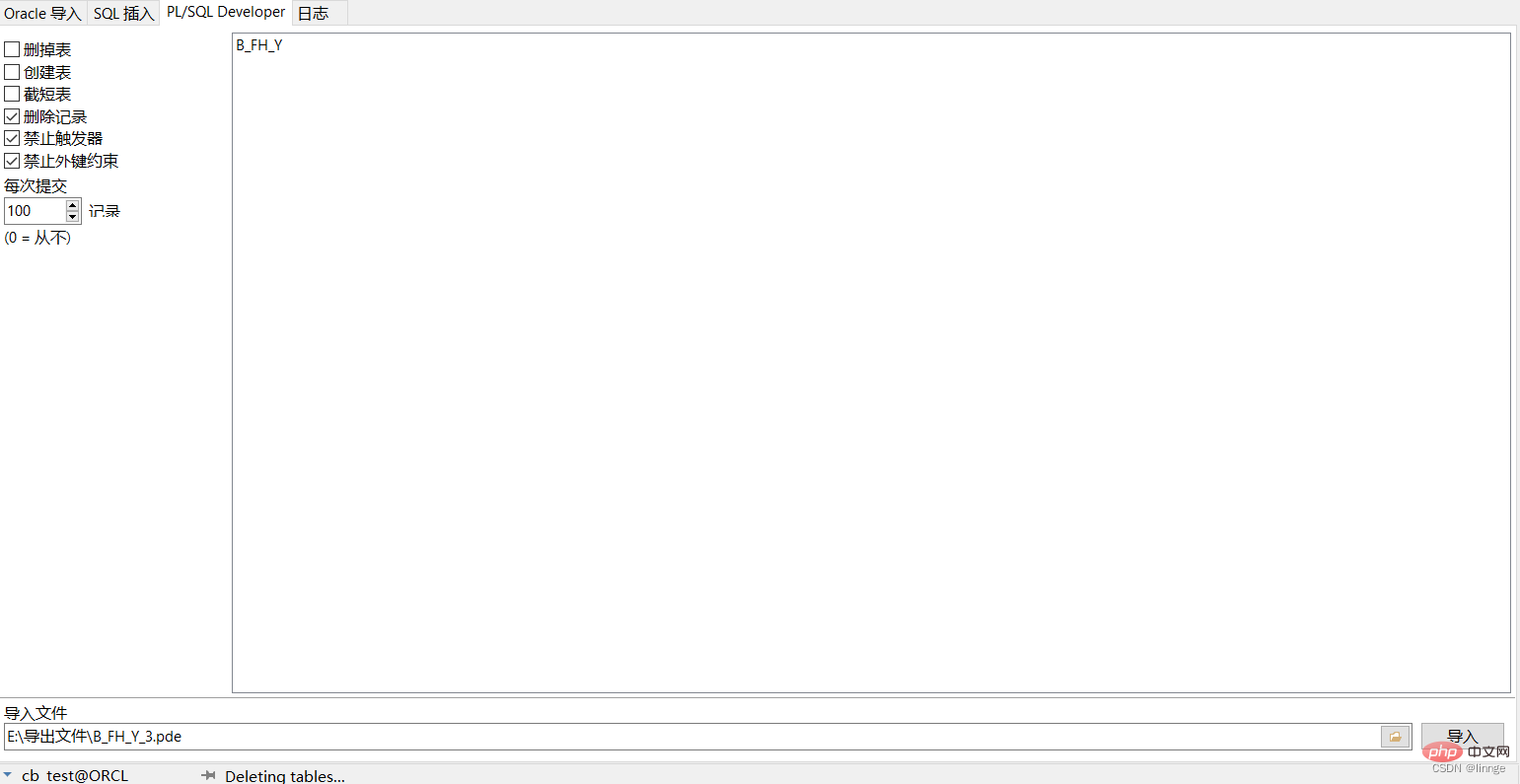
3. Summary
(1) If you need to interact with other people with a small amount of daily data, Export query results to xlsx format
(2) ODBC importer and text importer need to write the table structure in advance
(3) If a large amount of data needs to be migrated, choose the Oracle method of "Export Table" and "Import Table". There is no need to write the table structure
(4) The backup data can be directly exported to a file in dmp format. Re-import when you need to restore
Recommended tutorial: "Oracle Video Tutorial"
The above is the detailed content of Detailed examples of Oracle data table import and export. For more information, please follow other related articles on the PHP Chinese website!

Hot AI Tools

Undresser.AI Undress
AI-powered app for creating realistic nude photos

AI Clothes Remover
Online AI tool for removing clothes from photos.

Undress AI Tool
Undress images for free

Clothoff.io
AI clothes remover

Video Face Swap
Swap faces in any video effortlessly with our completely free AI face swap tool!

Hot Article

Hot Tools

Notepad++7.3.1
Easy-to-use and free code editor

SublimeText3 Chinese version
Chinese version, very easy to use

Zend Studio 13.0.1
Powerful PHP integrated development environment

Dreamweaver CS6
Visual web development tools

SublimeText3 Mac version
God-level code editing software (SublimeText3)

Hot Topics
 1664
1664
 14
14
 1423
1423
 52
52
 1317
1317
 25
25
 1268
1268
 29
29
 1246
1246
 24
24
 What to do if the oracle can't be opened
Apr 11, 2025 pm 10:06 PM
What to do if the oracle can't be opened
Apr 11, 2025 pm 10:06 PM
Solutions to Oracle cannot be opened include: 1. Start the database service; 2. Start the listener; 3. Check port conflicts; 4. Set environment variables correctly; 5. Make sure the firewall or antivirus software does not block the connection; 6. Check whether the server is closed; 7. Use RMAN to recover corrupt files; 8. Check whether the TNS service name is correct; 9. Check network connection; 10. Reinstall Oracle software.
 How to solve the problem of closing oracle cursor
Apr 11, 2025 pm 10:18 PM
How to solve the problem of closing oracle cursor
Apr 11, 2025 pm 10:18 PM
The method to solve the Oracle cursor closure problem includes: explicitly closing the cursor using the CLOSE statement. Declare the cursor in the FOR UPDATE clause so that it automatically closes after the scope is ended. Declare the cursor in the USING clause so that it automatically closes when the associated PL/SQL variable is closed. Use exception handling to ensure that the cursor is closed in any exception situation. Use the connection pool to automatically close the cursor. Disable automatic submission and delay cursor closing.
 How to create cursors in oracle loop
Apr 12, 2025 am 06:18 AM
How to create cursors in oracle loop
Apr 12, 2025 am 06:18 AM
In Oracle, the FOR LOOP loop can create cursors dynamically. The steps are: 1. Define the cursor type; 2. Create the loop; 3. Create the cursor dynamically; 4. Execute the cursor; 5. Close the cursor. Example: A cursor can be created cycle-by-circuit to display the names and salaries of the top 10 employees.
 What steps are required to configure CentOS in HDFS
Apr 14, 2025 pm 06:42 PM
What steps are required to configure CentOS in HDFS
Apr 14, 2025 pm 06:42 PM
Building a Hadoop Distributed File System (HDFS) on a CentOS system requires multiple steps. This article provides a brief configuration guide. 1. Prepare to install JDK in the early stage: Install JavaDevelopmentKit (JDK) on all nodes, and the version must be compatible with Hadoop. The installation package can be downloaded from the Oracle official website. Environment variable configuration: Edit /etc/profile file, set Java and Hadoop environment variables, so that the system can find the installation path of JDK and Hadoop. 2. Security configuration: SSH password-free login to generate SSH key: Use the ssh-keygen command on each node
 Oracle's Role in the Business World
Apr 23, 2025 am 12:01 AM
Oracle's Role in the Business World
Apr 23, 2025 am 12:01 AM
Oracle is not only a database company, but also a leader in cloud computing and ERP systems. 1. Oracle provides comprehensive solutions from database to cloud services and ERP systems. 2. OracleCloud challenges AWS and Azure, providing IaaS, PaaS and SaaS services. 3. Oracle's ERP systems such as E-BusinessSuite and FusionApplications help enterprises optimize operations.
 What to do if the oracle log is full
Apr 12, 2025 am 06:09 AM
What to do if the oracle log is full
Apr 12, 2025 am 06:09 AM
When Oracle log files are full, the following solutions can be adopted: 1) Clean old log files; 2) Increase the log file size; 3) Increase the log file group; 4) Set up automatic log management; 5) Reinitialize the database. Before implementing any solution, it is recommended to back up the database to prevent data loss.
 How to stop oracle database
Apr 12, 2025 am 06:12 AM
How to stop oracle database
Apr 12, 2025 am 06:12 AM
To stop an Oracle database, perform the following steps: 1. Connect to the database; 2. Shutdown immediately; 3. Shutdown abort completely.
 How to export oracle view
Apr 12, 2025 am 06:15 AM
How to export oracle view
Apr 12, 2025 am 06:15 AM
Oracle views can be exported through the EXP utility: Log in to the Oracle database. Start the EXP utility, specifying the view name and export directory. Enter export parameters, including target mode, file format, and tablespace. Start exporting. Verify the export using the impdp utility.




